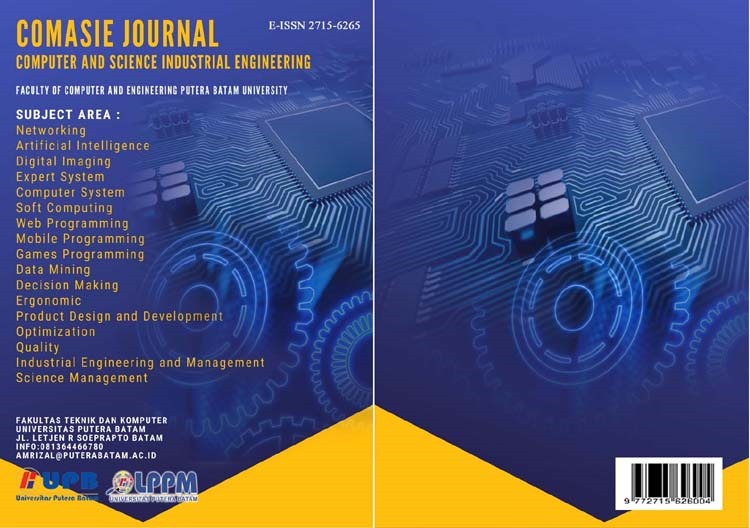OPTIMASI PROSES PRODUKSI PLASTIK PENYIMPANAN MAKANAN DI PT SANIPAK INDONESIA
DOI:
https://doi.org/10.33884/comasiejournal.v10i3.9092Keywords:
Lean Manufacturing, Waste, Optimization, Value stream mapping, Fishbone DiagramAbstract
Optimizing the production process is an activity carried out by production to increase efficiency, productivity and quality of each product produced. This activity is carried out by preventing the occurrence of several factors, one of which is waste in each process flow. The impact of waste that occurs on the production process flow is in the form of a decrease in the quality of the product being worked on. PT Sanipak Indonesia is a company engaged in the plastic manufacturing industry. One of them is food storage plastic, this company uses a Make to Order system. Food storage plastic production at PT Sanipak Indonesia experienced problems with product quality decreasing by up to 15% from the previous month. This results in many defective and wasted products in the storage warehouse, so that optimizing the production process does not run smoothly. The accumulation of defective products due to the production process that has been carried out causes losses for the company. Many products do not achieve good quality, this factor also occurs due to the minimal placement area for products that have been processed. Because production did not reach the desired quality target, overall improvements were made from the start to the end of the process. This research aims to find out how to reduce the waste that occurs so that the production process can run optimally. This research uses an analytical method based on the lean manufacturing approach with value stream mapping. To analyze waste, this research uses a fishbone diagram. The results obtained from periodic inspections carried out for 6 days were the occurrence of waste overproduction with the highest level of waste with a weight of 51.02%, and the lowest waste defect with a weight of 48.98%. This problem can be solved in several ways, one of which is repairing waste defects and waste overproduction by regularly calibrating machines or work tools according to SOPs, as well as replacing machines that are no longer suitable for reuse, and expanding storage warehouses by providing labels. product indication in each storage area. Based on the results of the Future State Mapping mapping carried out, a Process cycle efficiency value of 79.80% was obtained from 68.37%. These results showed that production had increased by 18.2%, which enabled the production process to optimize the production process again, so that the quality of the products produced increased again.
References
Abhishek, P. G., and Maheshwar Pratap. 2020. “Achieving Lean Warehousing Through Value Stream Mapping.” South Asian Journal of Business and Management Cases 9(3): 387–401. doi:10.1177/2277977920958551.. In IOP Conference Series: Journal of Physics (pp. 1–8).
Adeodu, Adefemi, Rendani Maladzhi, Mukondeleli Grace Kana-Kana Katumba, and Ilesanmi Daniyan. 2023. “Development of an Improvement Framework for Warehouse Processes Using Lean Six Sigma (DMAIC) Approach. A Case of Third Party Logistics (3PL) Services.” Heliyon 9(4). doi:10.1016/j.heliyon.2023.e14915.
Bashira, Hamdi, Mohammad Shamsuzzamanb, Salah Haridyc, and Imad Alsyoufd. Lean Warehousing: Studi Kasus Di Hypermarket Ritel. www.onlinedoctranslator.com.
Ma’ruf, Fakhrudin, and Said Salim Dahdah. 2021. “Analisis Pemetaan Aliran Nilai Menggunakan Waste Failure Mode and Effect Analysis (W-FMEA) Dan Lean Manufacturing.” Jurnal Teknik Industri 11(2): 140–49. doi:10.25105/jti.v11i2.9706.
Zahraee, Seyed Mojib, Ali Tolooie, Salman Jameh Abrishami, Nirajan Shiwakoti, and Peter Stasinopoulos. 2020. “Lean Manufacturing Analysis of a Heater Industry Based on Value Stream Mapping and Computer Simulation.” In Procediam Manufacturing, Elsevier B.V., 1379–86. doi:10.1016/j.promfg.2020.10.192














